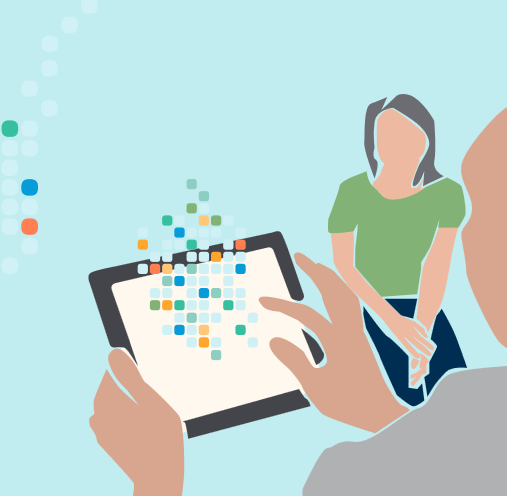WHO Guideline: Recommendations on Digital Interventions for Health System Strengthening

"Digital technologies introduce novel opportunities to address health system challenges, and thereby offer the potential to enhance the coverage and quality of health practices and services."
The World Health Assembly (WHA) Resolution on Digital Health approved by World Health Organization (WHO) Member States in May 2018 demonstrated a collective recognition of the value of digital technologies to contribute to advancing universal health coverage (UHC) and other health aims of the Sustainable Development Goals (SDGs). This WHO guideline presents recommendations on 10 ways that countries can use digital health technology, accessible via mobile phones, tablets, and computers, to improve people's health and essential services. Intended for decision-makers in ministries of health, public health practitioners, and other stakeholders, the document is based on a critical evaluation of the evidence on emerging digital health interventions that are contributing to health system improvements, based on an assessment of the benefits, harms, acceptability, feasibility, resource use, and equity considerations.
Digital health, or the use of digital technologies for health, is a field of practice for employing information and communication technology (ICT) to address health needs. The term digital health is rooted in eHealth, which is defined as "the use of information and communications technology in support of health and health-related fields". Mobile health (mHealth) is a subset of eHealth and is defined as "the use of mobile wireless technologies for health".
The systematic reviews included accessibility via mobile devices to ensure that these digital interventions are applicable in low-resource settings where extensive computerised systems may not be available or feasible. However, the recommended interventions can be deployed through any digital device, including stationary devices such as desktop computers, and does not preclude them from being used on non-mobile digital devices.
The guideline offers recommendations across the following interventions:
- birth notification via mobile devices
- death notification via mobile devices
- stock notification and commodity management via mobile devices across all health conditions
- client-to-provider telemedicine across all health conditions
- provider-to-provider telemedicine across all health conditions
- targeted client communication (TCC) via mobile devices (spread across five population groups for sexual, reproductive, maternal, newborn, child, and adolescent health [SRMNCAH])
- health worker decision support via mobile devices across all health conditions
- digital tracking of patients'/clients' health status and services via mobile devices across all health conditions
- digital tracking combined with: (a) decision support and (b) targeted client communication
- provision of training to health workers via mobile devices (mLearning) across all health conditions
Digital health interventions may be used, for example, to facilitate targeted communications to individuals in order to generate demand (e.g., for vaccines) and broaden contact coverage. One digital intervention already having positive effects in some areas is sending reminders to pregnant women to attend antenatal care appointments and having children return for vaccinations. Other digital approaches reviewed include decision-support tools to guide health workers as they provide care, and enabling individuals and health workers to communicate and consult on health issues from across different locations.
For each of the digital health interventions reviewed in the guideline, this chapter elaborates on the following components:
- background information on the specific digital health intervention;
- an overview of the specific evidence;
- the recommendation along with a justification and remarks; and
- specific implementation considerations.
In addition, Web Supplement 1 contains the evidence-to-decision frameworks and elaborates on the specific findings for each intervention as it relates to its effectiveness, acceptability, feasibility, resource use, and gender, equity, and human rights concerns.
WHO stresses that, "While recognizing the innovative role that digital technologies can play in strengthening the health system, there is an equally important need to evaluate their contributing effects and ensure that such investments do not inappropriately divert resources from alternative, non-digital approaches." Relatedly, digital technologies are no silver bullet. For instance, digital technologies may enable health workers to communicate more efficiently on the status of commodity stocks and gaps, but notification alone is not enough to improve commodity management: Health systems also must respond and take action in a timely manner for replenishing needed commodities.
150
Posting from Garrett Mehl to the IBP Global knowledge gateway, April 18 2019; and WHO news release, April 17 2019 - accessed on April 24 2019; and email from Garrett Mehl to The Communication Initiative on April 29 2019.
- Log in to post comments
